The fact that an aeroplane crashed on a house in Budapest could not be hidden. The public presumably picked up the dailies on Tuesday morning, 8 August 1961, curious for a detailed account of the accident. The papers were not published on Monday, so they could read about the plane crash in Budapest the previous Sunday only in this issue.
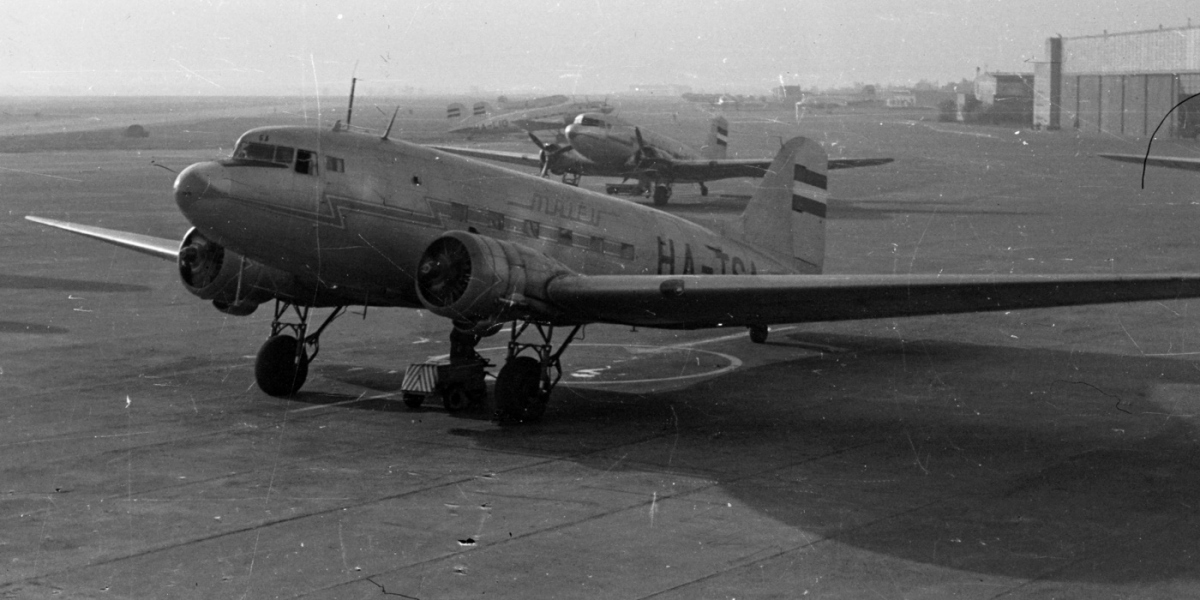
The plane, that crashed later in 1960 (Photo: Fortepan/No.: 143611)
One might think that a plane crash in Hungary and even in the capital dominated the news, but it did not happen that way. The most important newspaper of socialist Hungary, Népszabadság, reported on the accident only on page 11:
"The MALÉV sightseeing plane crashed. A devastating accident occurred: on Sunday, 6 August, at 5 pm the MALÉV sightseeing plane crashed in the 14th District of Budapest. Twenty passengers and four crew members of the plane were killed. A committee sent by the Ministry of Transport and Posts has launched an investigation to determine the cause of the accident."
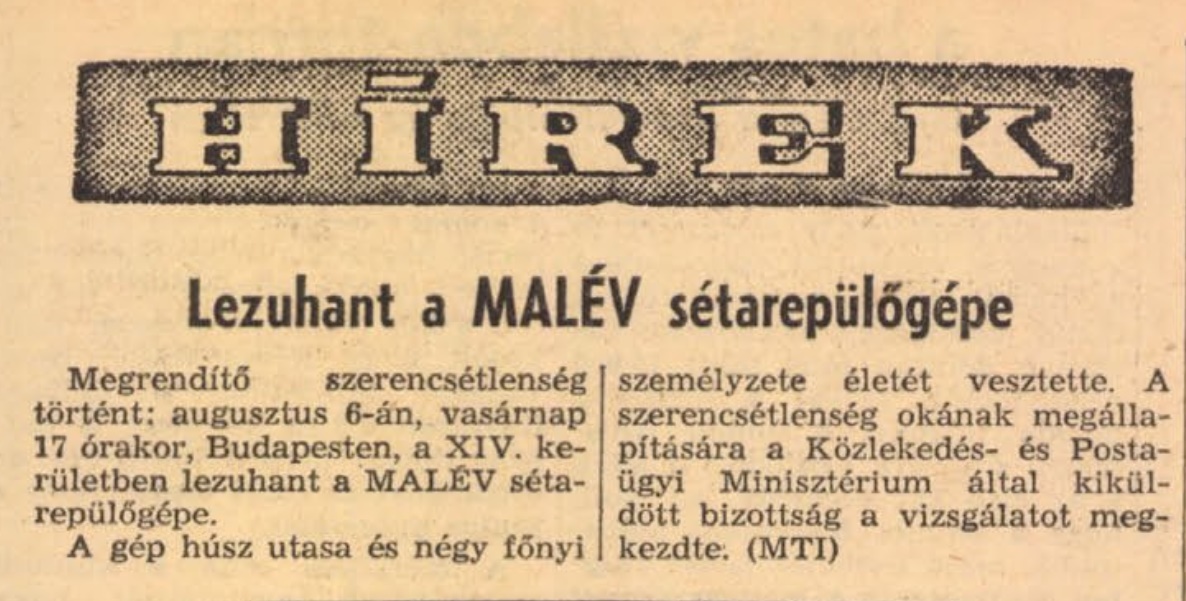
Small, factual news on page 11 in the 8 August 1961 issue of Népszabadság
By the way, the main news that day was the Soviet Major Tyitov's space trip, which was reported in the papers. The other newspapers also only published the short MTI news about the plane that crashed into the house in Zugló, nothing more. There were no on-site reports, photographs, accounts of the injured, the rescue - which lasted for two days, only the next day of the accident they were able to remove the damaged nose of the broken plane from the house.
What happened on that Sunday afternoon, 6 August 1961, 60 years ago? MALÉV's plane went on a sightseeing flight, at that time it was a scheduled flight over Budapest, these were a kind of sightseeing tours: not by bus, but by plane. Of course, we do not have to think about today’s big planes but 20-person planes, basically LI-2 planes: it was possible to fly a few hundred metres above the city with them. On Sunday, 6 August, the MALÉV HA-TSA took off for the fifth time.
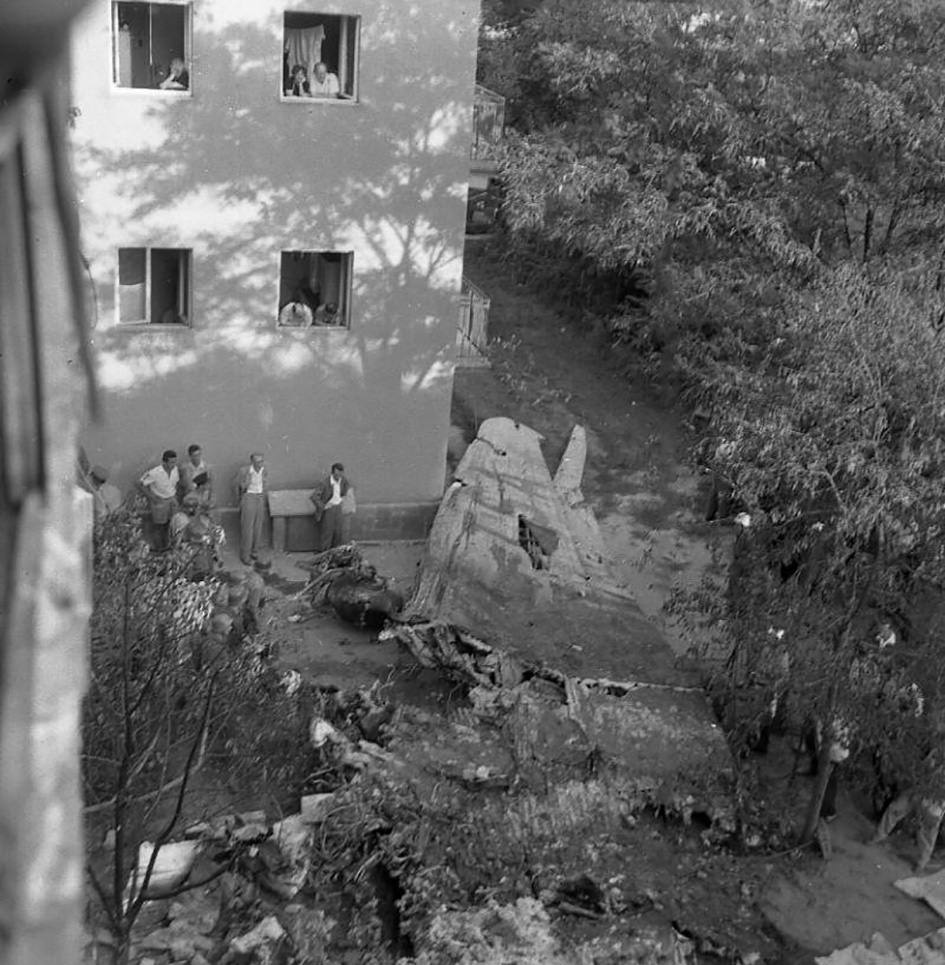
The wreckage of the plane in the yard (Photo: Central Museum of the Disaster Management)
The history of this aircraft is also interesting, as it was an American C-47 aircraft manufactured in 1943, which was forced to land in Hungary in 1951 by Soviet aircraft. The plane was transporting from Germany to the American embassy in Belgrade, but on the way, it was swept into Hungarian airspace due to the strong wind. The Hungarian Air Force first tried to shoot down the border-breaking plane, then Soviet fighters forced it to the ground. The staff was released with a very large fine, and the plane was seized by the Hungarian authorities as a means of border violation.
This aircraft was finally acquired by MALÉV in 1956, which used it as a civilian, passenger aircraft. The American C-47 military aircraft was a military version of the Douglas DC-3. Classification into MALÉV's fleet was not a major problem, as MALÉV's version of the DC-3, manufactured in the Soviet Union at the time (the license for the aircraft was purchased before the war), used LI-2 aircraft.
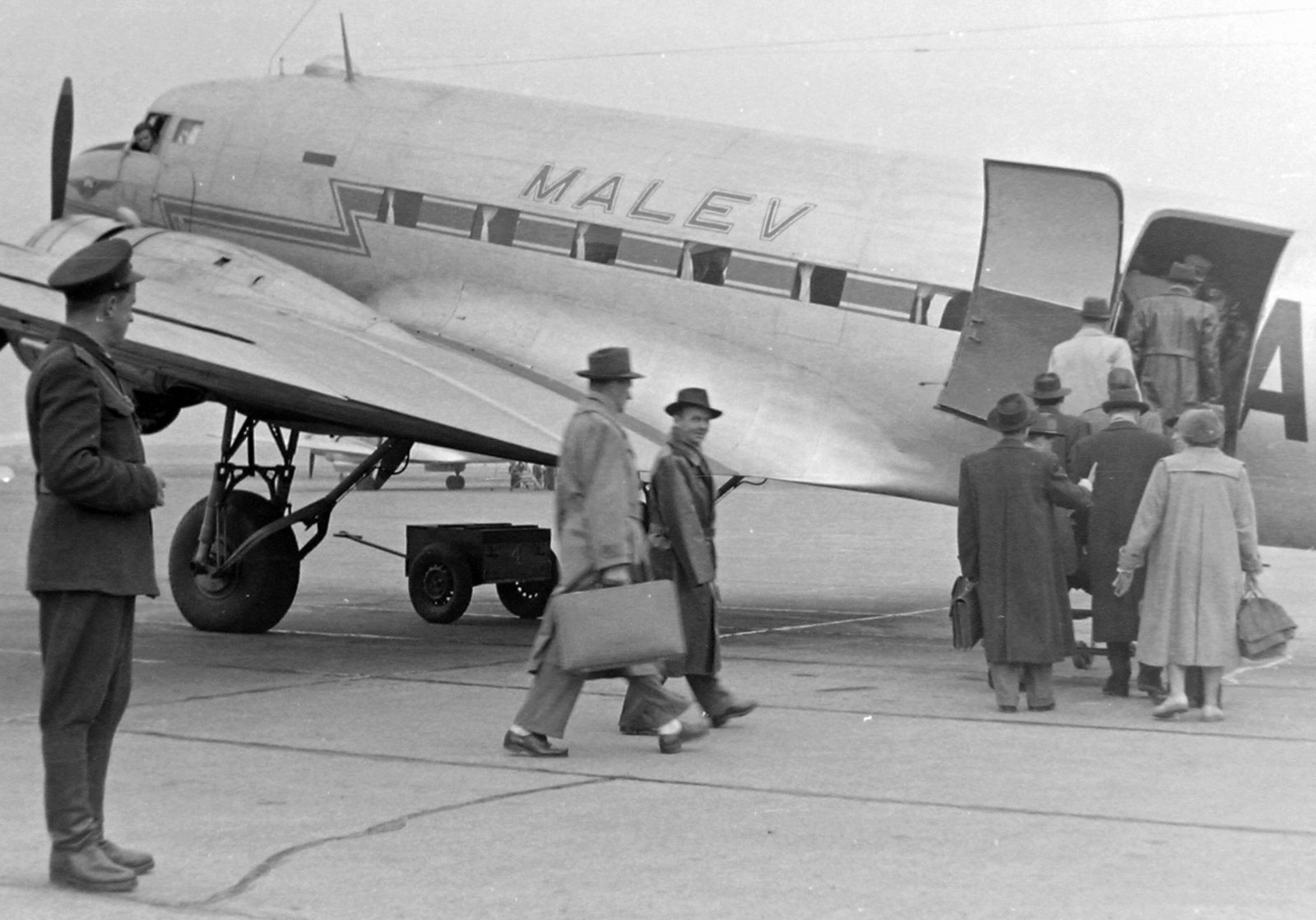
Passengers board the plane that later crashed, 1957 (Photo: Fortepan/Magyar Rendőr)
The aircraft took off from Ferihegy on 6 August 1961, at 3:44 pm with 20 paying and three guest passengers on board in addition to the crew. These three people were not on the official passenger list, they were acquaintances of the crew, two women, and the son of the mechanic's neighbour.
The machine was overcrowded, not everyone had a seat. The pilots let one of the woman acquaintances into the cockpit, and the guest boy was sitting in the radio telegrapher's place, and the other lady, who was also a MALÉV employee, looked into the cockpit. In the four-man cockpit, where the captain, co-pilot, mechanic and radio telegrapher were usually present, there was considerable congestion and, as the investigation revealed, "paid" passengers were not buckled up in the cabin, contrary to the rules.
The captain, Róbert Hoffman, was an experienced military flyer, veteran fighter pilot, but the first officer, József Hegyi, was disqualified from the military, yet he was able to fly at MALÉV.
The route of the 12-minute City Park flight was strictly fixed, but this time the pilots deviated from it and performed various “arts” in Budapest airspace, taking the plane several times to nose-dive, presumably to dazzle the two ladies on board. Passers-by also noticed the strangely behaving plane over Zugló, the bravura of which eventually turned into a tragedy: the plane crashed into the storeyed house at 224 Róna (then Lumumba) Street at 16:56.
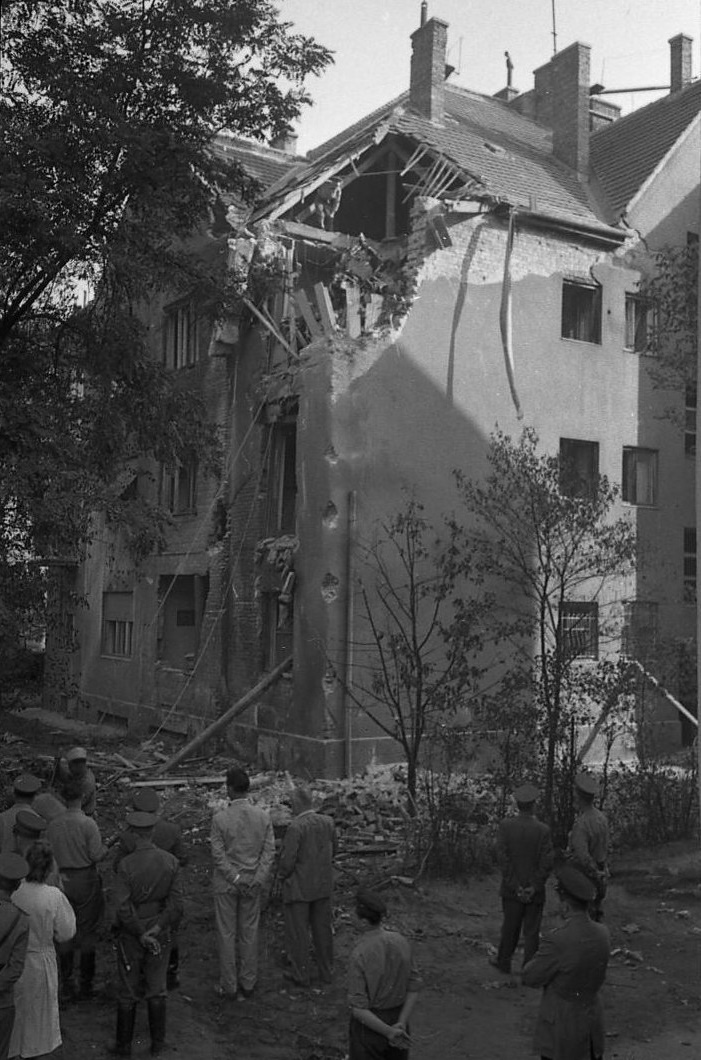
Damage to the house in Zugló (Photo: Central Museum of the Disaster Management)
The plane turned on its back before the crash and the unrestrained passengers fell out of their seats. All 27 people on the plane - 17 adults and six children - died immediately, although according to some recollections, someone was still living in the cockpit at the start of the rescue, by the time he was taken out, he was dead. Three more people died in the garden of the house on Lumumba Street, the oldest victim being a 20-year-old who, along with a 17-year-old and a 13-year-old, repaired a bike in the yard, leaving 30 casualties in the accident. Among the ruins of the house, a more severely injured adult and a more easily injured three-month-old infant were rescued.
Contemporary newspapers, as we have seen, wrote extremely briefly about the tragedy, publishing the results of an investigation on 12-13 August, respectively, in a slightly longer article, but not on the front page, stating that multiple staff misconduct was the cause of the disaster.
The notice of the investigation, quoted from the 13 August 1961 issue of Esti Hírlap, ended as follows:
“The Ministry of Transport and Posts has reported the results of the investigation to the Council of Ministers. The government and society as a whole share with deep sympathy the grief of the relatives of the victims. The Ministry of Transport and Posts has put in place strict regulations to prevent a similar incident.”
One such rule was the abolition of sightseeing flights over Budapest.
Cover photo: The crashed plane (Photo: Central Museum of the Disaster Management)

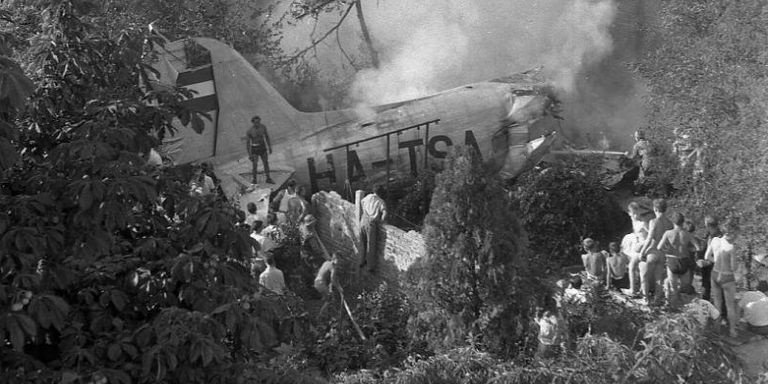


































Hozzászólások
Log in or register to comment!
Login Registration